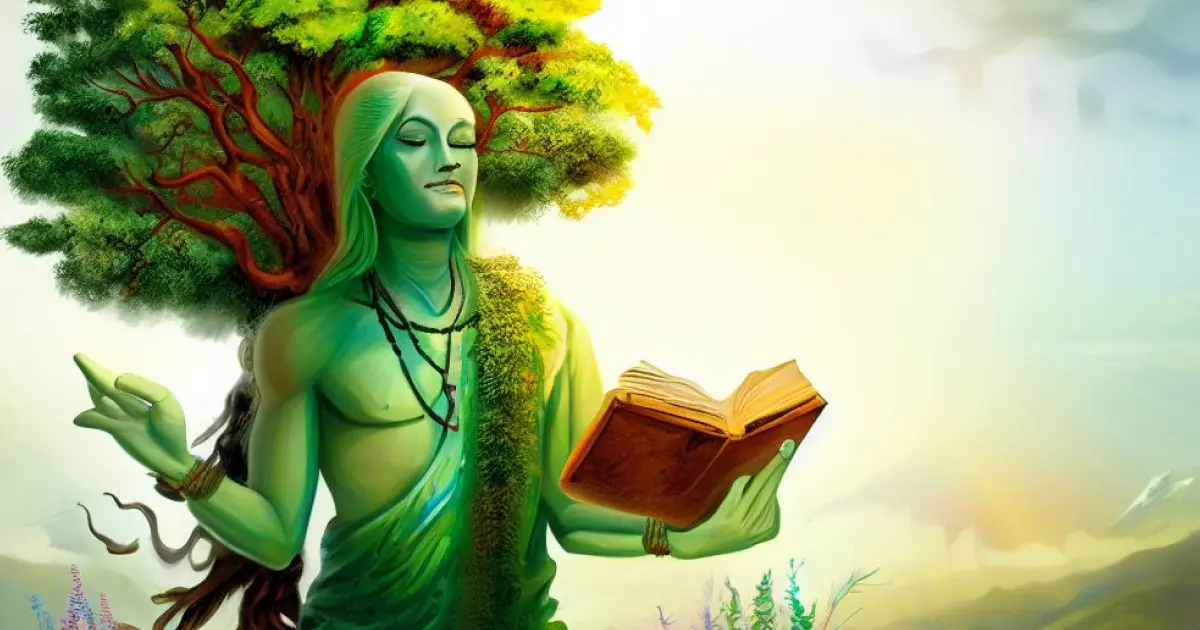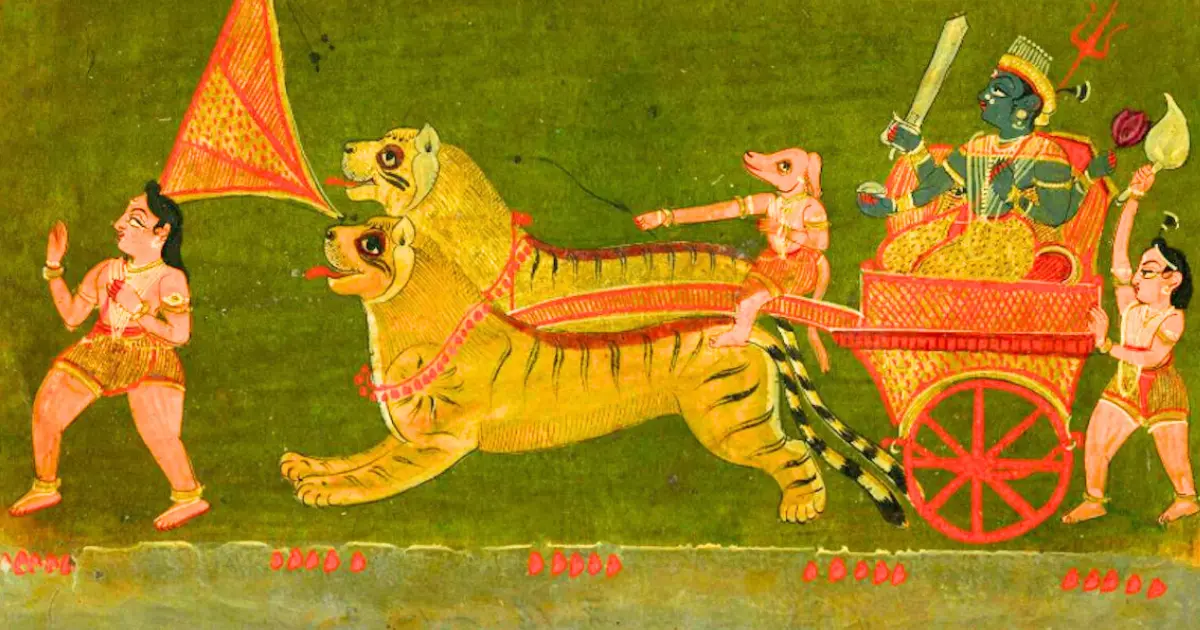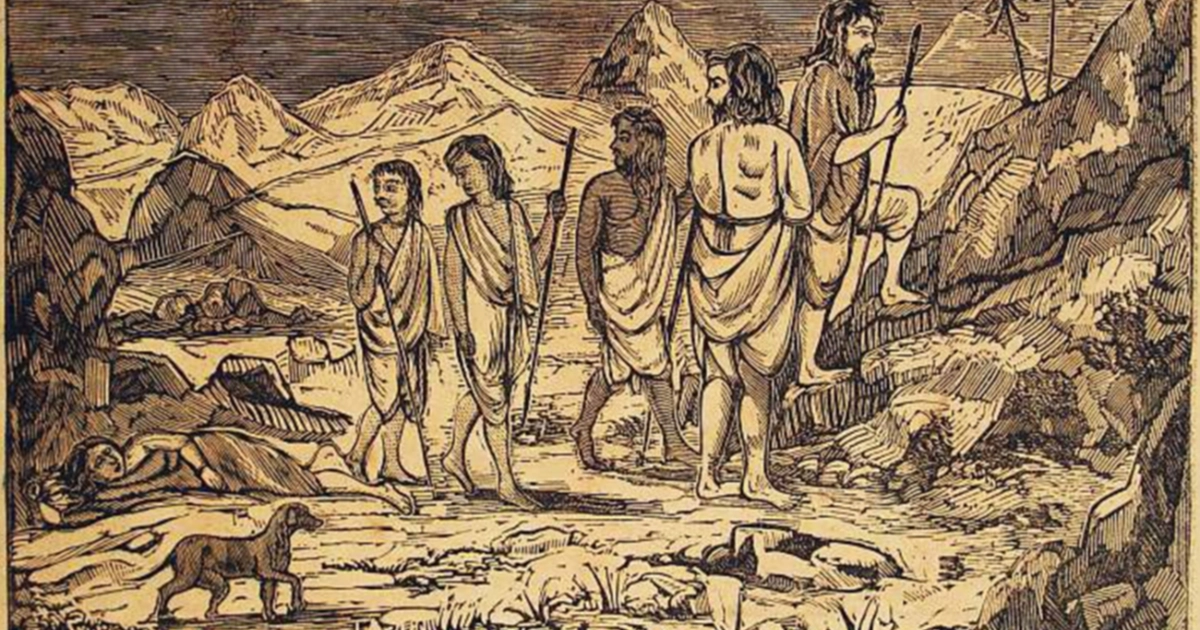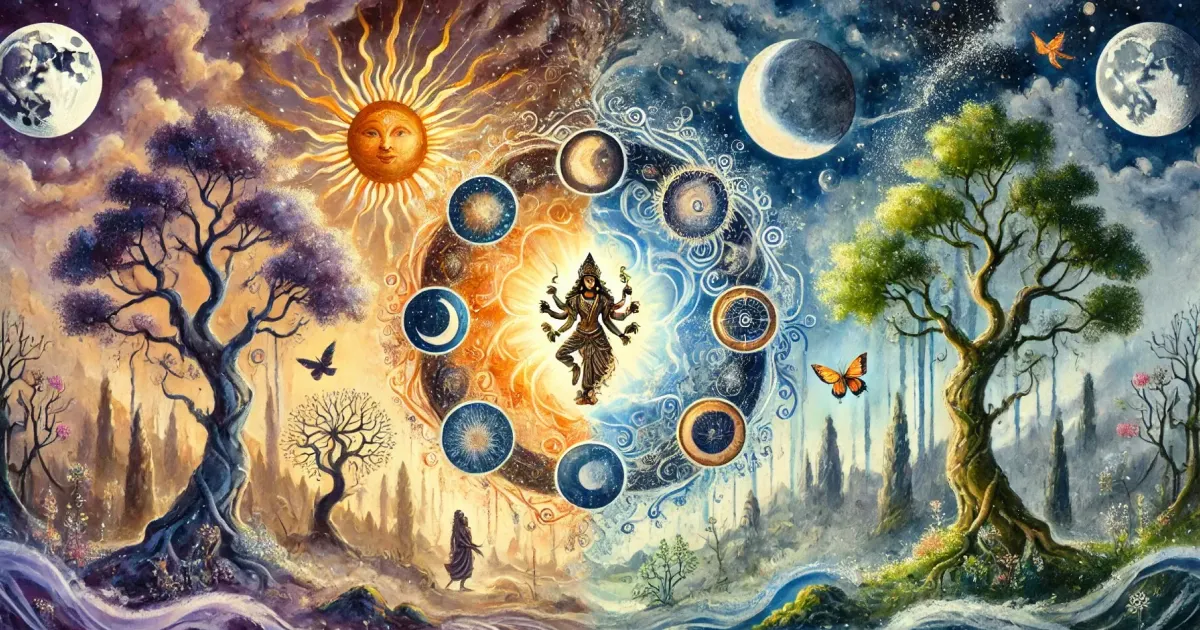madhu vātā ṛtāyate madhu kṣaranti sindhavaḥ mādhvīrnaḥ santvoṣadhīḥ madhu naktaṁ mutoṣasi madhumat pārthivaṁ rajaḥ madhu dyaurastu naḥ pitā madhumān to vanaspatiḥ madhumānastu sūryaḥ mādhvīrgāvo bhavantu naḥ oṁ madhu, madhu, madhu
The above-mentioned hymn from the Ṛgveda magnificently describes how the universe creation is filled with an abundance of honey-like sweetness and profound joy. It is evident that the Vedic people were one with nature. But, there is an urge of thoughtful engagement to find how much our contemporary perspective has strayed from that of the ancient sages who embraced profound inclusiveness, inspired by deep spiritual insights! Nowadays, it is challenging for us to think of our environment or nature as a divine entity because it is difficult to experience the pure breeze for it is densely polluted, and it is even more arduous to envision pristine rivers flowing smoothly since they have significantly diminished and have become highly contaminated. The sky itself is clouded with dark smoke, and the soil’s fertility has been negatively affected. We are undeniably living in an era where the Earth’s existence and well-being are at risk.
In Hinduism, Earth is personified as the mythic, iconic and metonymic figure symbolized as Bhū (Devī). One of the stories of Viṣṇu’s boar avatar mentioned in Paurānika literature speaks briefly about how Bhū Devī’s call for help initiates Viṣṇu’s incarnation. Bhū Devī is carried off by asuras and is submerged in the ocean. When she cries for help to Viṣṇu, the Lord comes in the form of Varāha, the Boar, and rescues her. One of the most common iconographic representations of Bhū Devī shows Varāha carrying her aloft on his tusks. The image of Bhū Devī is small, fragile, and feminine, in contrast to Varāha, who is portrayed as large, virile, and masculine. In this representation, it is generally understood that an underlying concern for the Earth, as vulnerable, is being expressed. The effect of her weakening is perceived as disastrous. The earth, its soil, is fragile, just as the Earth goddess is fragile. Both need protection. But due to widespread human activities, we have pushed Bhū Devī to the brink of vulnerability.
The realisation that the Bhū Devī is in a deteriorating state is commonly felt in today’s times. Apparently scientific advancements to combat pollution, extinction of life forms and climate change seem to offer solutions that are less harmful and even beneficial for the ecosystem but such scientific solutions are not enough.
In order to bring meaningful change, it is required to examine institutions that shape our ideology from an ecological perspective
Contemporary Frameworks
The discussions on the nascent environmental movement started gaining momentum in the 1960s in America with the publication of Rachel Carson’s Silent Spring in 1962. Carson’s book was instrumental in raising awareness about detrimental effects of pesticides on the environment, including the harm they caused to wildlife, ecosystems and human health. It is believed that this book played a pivotal role in the modern environmental movement. With the surge of events like the celebration of Earth day which began in the 1970s, formation of Environment Protection Agency (EPA) and the agreement of Endangered Species Act in 1973, all this made environmental awareness a significant thread in the American fabric. This further compelled the literary world and academia to ponder over nature and environment as a matter of earnest concern.
In the field of English literary studies, a term ecocriticism was coined by William Rueckert in his essay titled Literature and Ecology: An Experiment in Ecocriticism published in 1978, which takes an earth-centered approach. Ecocriticism is a theoretical approach which argues that human beings are deeply influenced by their environment and this influences both natural and cultural aspects. Literary theory studies how individuals in society behave and react in relation to nature and its ecological aspects. W. Howarth in his essay Ecocriticism Reader: Landmarks in Literary Ecology published in 1996 rightly says,
For studying nature in literature produced in India, one cannot use the taxonomies of nature writing based on the traditions of ecocriticism from the West - because in Indian context we do not see nature as divorced from human beings.
Upaniṣadic Framework
In several Indian languages, the Saṃskṛta word for ‘nature’ is often equated with ‘prakṛti’. However, translating ‘prakṛti’ back to ‘nature’ may not accurately capture its intended meaning. ‘Prakṛti’ as nature in the Indian context refers to the sense of being the origin and force responsible for the creation of things, the word ‘nature’ on the other hand signifies the sense of an extra-human world. On looking closely, one can trace the dualistic mode of thought embedded in the word ‘nature’ which creates alienation from the natural world, while the term ‘prakṛti’ exclusively talks about monism which is considered by scholars as more ecologically friendly mode of thought.
To explain further, prakṛti is that which precedes and is that which is in its own form. Prakṛti has the innate power of transformation and manifestation as it refers to the material cause and is also the producer of effects. A significant aspect of the concept of prakṛti is its oneness as the source of evolution of its variants. Advaita Vedānta in this regard offers to achieve unity as the ecological demand while cancelling the possibility of hierarchical dualism.
Advaita Vedānta is a school of Hindu philosophy and sādhana, which is the path of a spiritual discipline and experience. The term ‘Advaita’ in Advaita Vedānta means non-dualism, or that which has no duality. Non-dualism can also be equated with monism which attributes oneness or singleness. Literally, Vedānta means the end of the Veda, vedasya antaḥ, the conclusion as well as the goal of the Vedas. The Upaniṣads are the concluding portion of the Vedas and contain their essence. Advaita Vedānta, re-propounded by Śrī Ādi Śaṅkarācārya, believes that the entire universe is nothing but consciousness, and this consciousness is non-dual Brahman which is ultimately real.
It holds great importance in Hindu dharma that nature has always been seen as a representation of Brahman, the divine and all-encompassing existence that exists both within and beyond everything. Brahman is the fundamental essence of the universe, permeating it entirely; it is present in all things, and all things exist within brahman. Brahman serves as the origin of the universe, supporting its existence, and eventually, the universe returns to brahman. This means that everything we perceive, sense, and encounter is imbued with the divine presence. But, over the ages human consciousness has simply forgotten its true identity (self or Atman) that is non-different from Brahman or the Supreme. The Upaniṣadic statement such as tat tvam asi, i.e., ‘that thou art’ signifies the fundamental fact of all existence and destroys ignorance regarding one’s true identity. The attainment of individual self can further assist in deemphasizing the radical duality which exists between human beings and their environment. In Advaita Vedānta, the ultimate aim of life is the realization of the non-dual nature of the ultimate reality. Continuing in this vein Taittirīya Upaniṣad mentions –
“Creating all things, Brahman entered into everything. Entering into all things, he became that which has shape and that which is shapeless; he became that which can be defined and that which cannot be defined…It is he who spread through and through in creation as unbroken joy.”
In order to regain our lost relationship with the Earth, one that reflects the oneness of existence taught by Vedānta, we need to retrieve the holistic vision of our ancient ṛṣis who vividly experienced the sacred reality of the environment in which they lived. Īśa Upaniṣad in this regard begins with the śloka –
īśā vāsyam idaṃ sarvaṁ yatkiñca jagatyāṁ jagat Know that whatever exists in this changing universe is pervaded with God.
Swami Vivekananda aptly conveys the practical application of the highest teachings of the Vedānta when he emphasizes that we should envelop everything with a divine presence, truly perceiving God in all things. He asserts that the entire world is imbued with the divine essence. This profound truth from the Upaniṣads has the potential to awaken humanity from the self-centred slumber. It is undeniable that selfishness lies at the root of our environmental crisis, as seen in the Īśa Upaniṣad’s opening verse, “tena tyaktena bhuñjīthā, mā gṛdhaḥ kasyasvid dhanam,” which translates to “protect yourself through detachment; do not covet anyone’s wealth.” In a global context, coveting others’ wealth signifies taking more than one’s fair share of the Earth’s resources.
Today’s ecological crisis is a consequence of a spiritual crisis
The primary cause of all environmental disasters is greed and selfishness, which drives individuals to hoard resources with clenched fists. To effectively combat greed and selfishness, we must put into practice Swami Vivekananda’s message of unity, where he stresses the importance of recognising the interconnectedness of all life, advocating for a mindset where we embrace the divinity within everything, ultimately leading to more harmonious and sustainable existence. In the words of Swami Vivekananda-
When I say I am separate from you it is a lie, a terrible lie. I am one with the universe. I am one with the air that surrounds me, one with heat, one with light, eternally one with the whole Universal Being, who is called this universe, who is mistaken for this universe, for it is He and nothing else. I am one with That.
References
- International Understanding for Human Unity: Past Lessons and Present Prospects, edited by Radharaman Chakrabarti, 2014.
- The Principal Upaniṣads by S. Radhakrishnan
- Purifying the Earthly Body of God: Religion and Ecology in Hindu India, edited by Lance E. Nelson, 1998.
- Nature in Indian Philosophy and Cultural Traditions by Meera Baindur, 2015.
- Ecological Resources within Advaita Vedanta by Michael Scaife, 2003.
- The Construction of India in Some Recent Environmental Philosophy by George Alfred James, 1998.
- The Wiley Blackwell Companion to Religion and Ecology, edited by John Hart, 2017.






